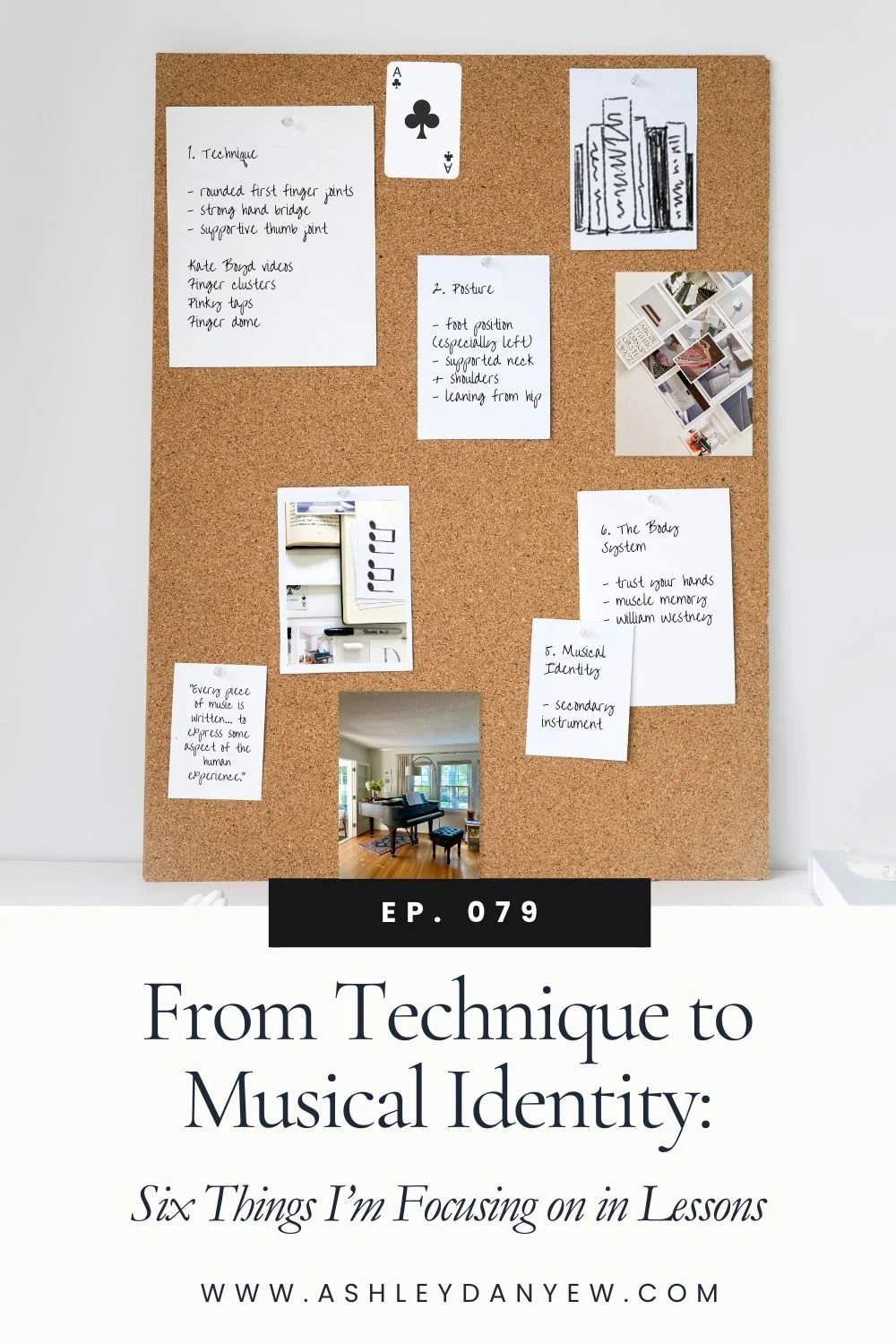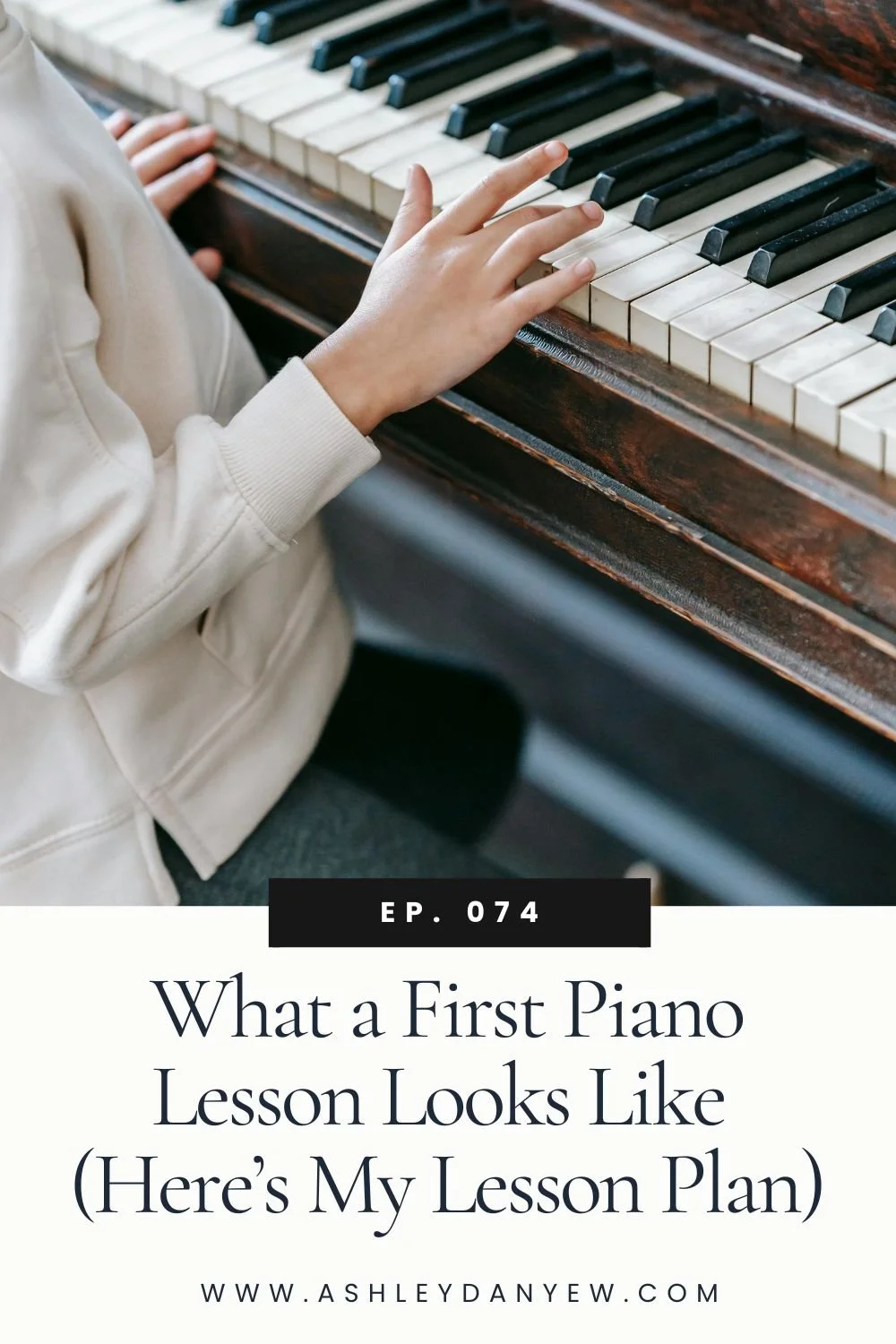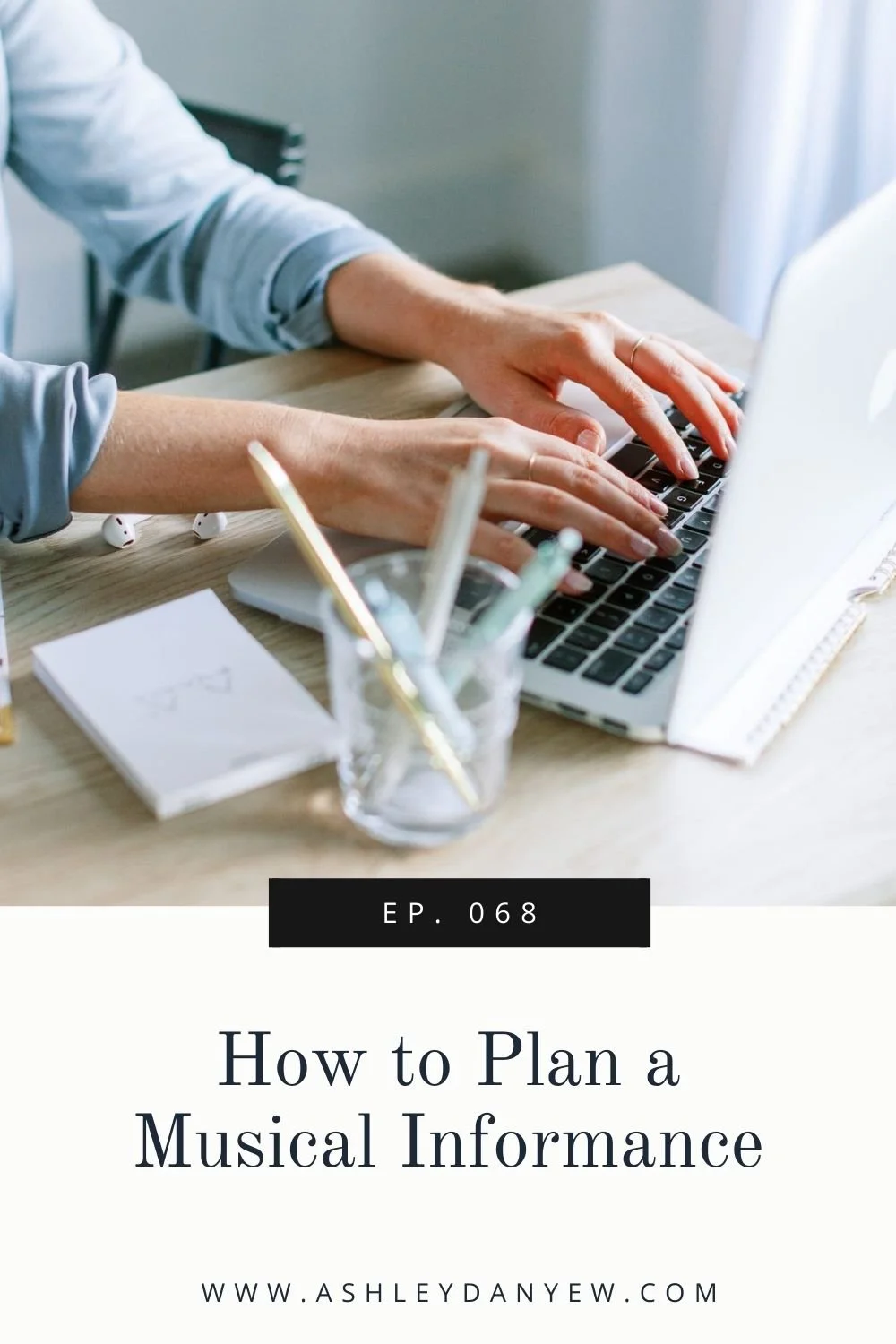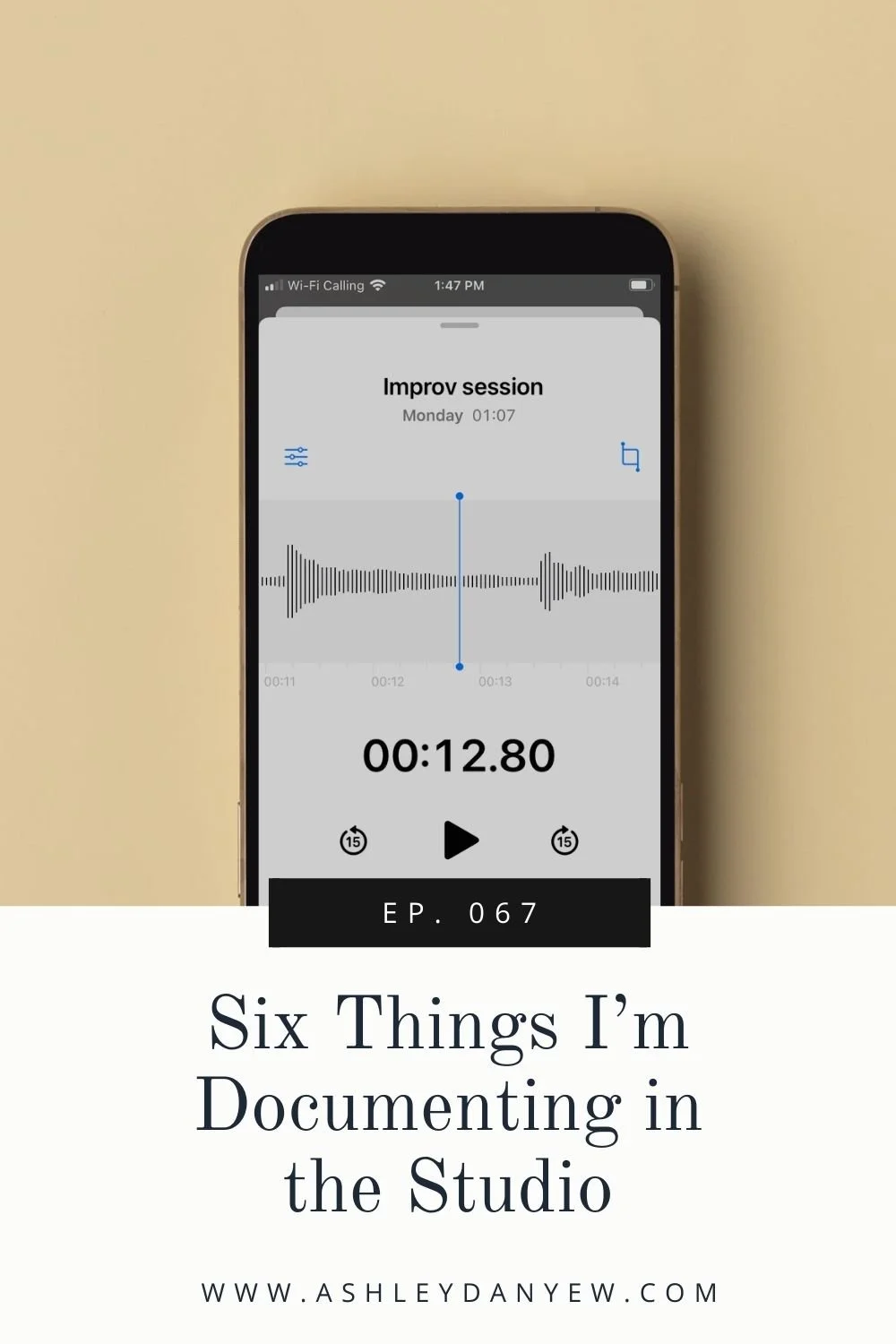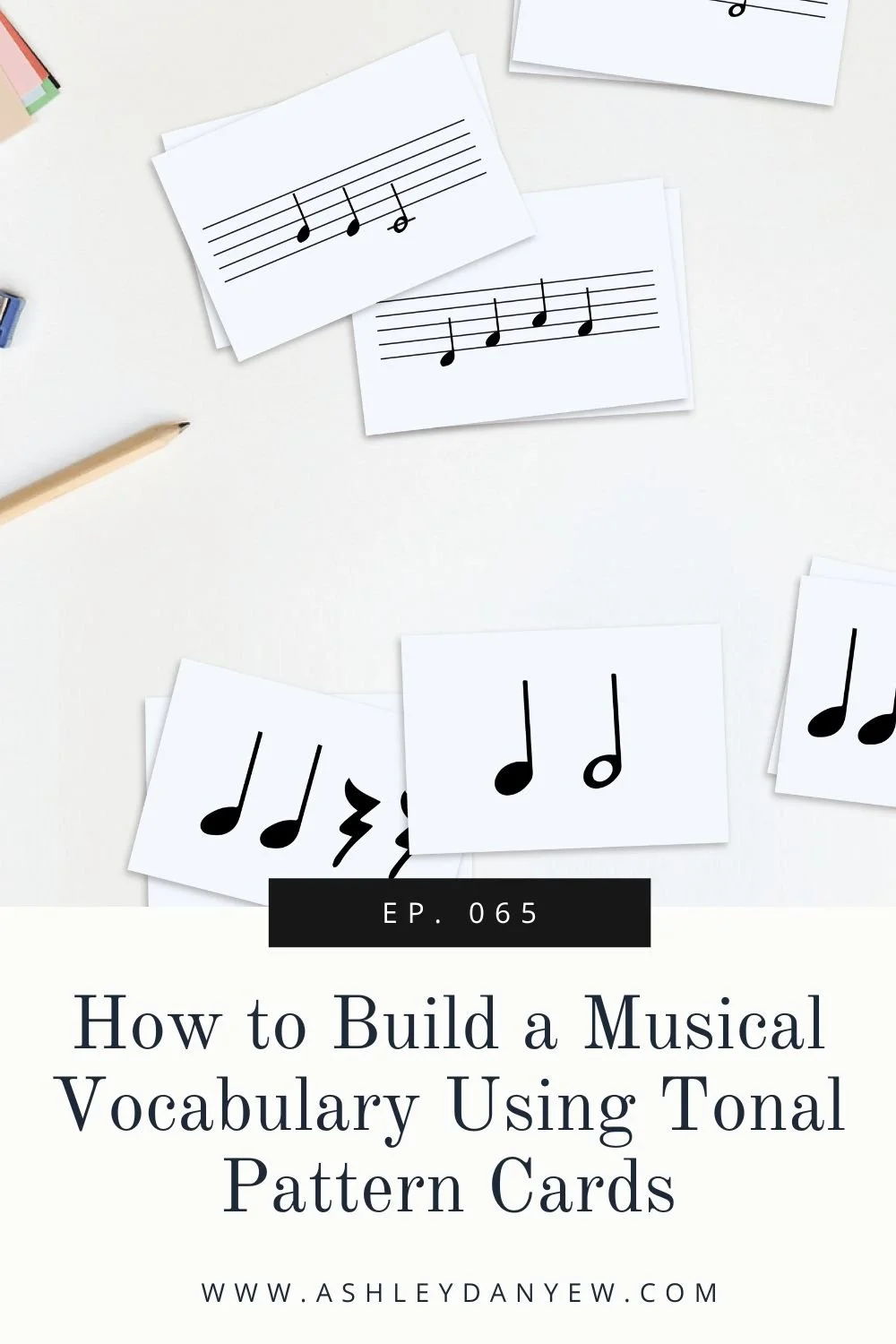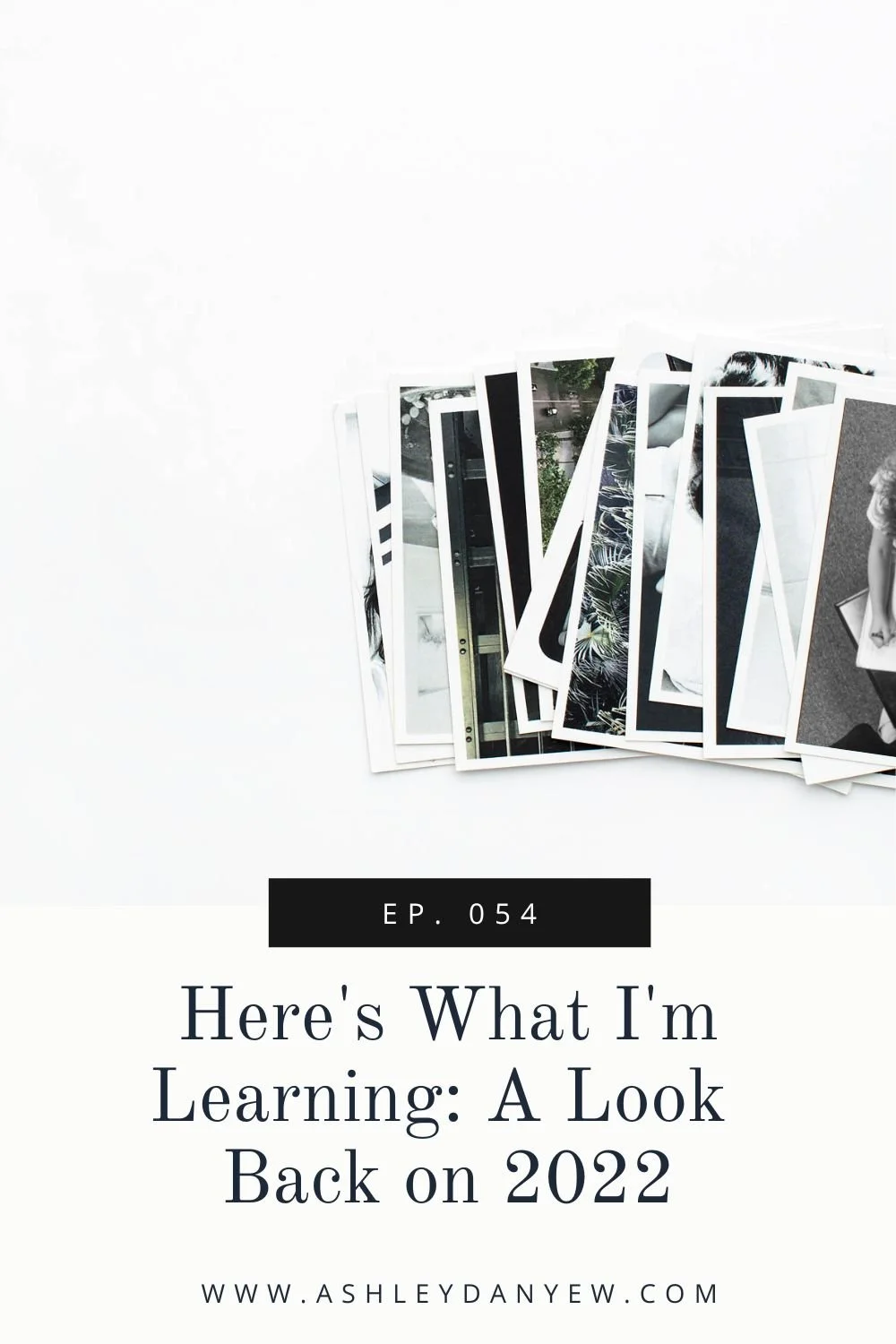Music Education Basics is a free online workshop for music educators in all types of settings.
This is Day 4 of our 5-day video and audio series.
If you’d like to watch the videos, you can sign up for free at learn.ashleydanyew.com. I’m sharing the audio version right here on the podcast so you can tune into the content here each day if that’s easier for you.
Today's the day you've been waiting for—we’re finally talking about music-reading: music notation, symbols, and intervals; how to introduce it in an intentional and musical way and help support the development of reading skills in those you teach, little by little.
If you haven’t watched or listened to Day 1, 2, or 3, go back and do that first before working through this lesson. There’s a reason why I waited to talk about music-reading until Day 4 — the content for Days 1, 2, and 3 comes first! And it’s important to lay that foundation and develop a solid understanding of those concepts before diving into today’s content.
In this episode:
Today, we’re talking about readiness for music-reading and developing proficiency.
Just like learning to read language, music-reading follows listening and responding, developing a musical vocabulary, and active musical experiences in a natural progression, as we’ve been reviewing this week.
If you’re a choir director or an elementary music teacher, I recommend introducing music-reading (as in holding a score in your hand) around 2nd or 3rd grade. We tend to introduce music-reading a little sooner in one-on-one settings — piano lessons or other beginning instrumental studies — but in choir, you can usually wait until 3rd grade and spend more time with rote-learning and gradually bridging that gap.
Start by introducing music notation in small doses: simple tonal or rhythm patterns, like we talked about on Day 2, or a short song with mostly stepwise motion to highlight direction on the staff and how the notes alternate between lines and spaces.
I’ll walk you through a simple 4-step process and a few tangible ways to do this in today's lesson.
Looking for the workbook? You’ll find it inside the learning platform, ready to download. Sign up for free access >>
If you enjoyed this episode, please take a moment to share it on Instagram!
Looking for more?
If this leaves you curious and ready to dive deeper into the study and practice of music teaching and learning, I’d love to invite you to join me in my signature program, The Art of Music Teaching & Learning.
Designed for music educators in all types of settings, this 8-week course will help you refine and cultivate your teaching skills by developing a deeper understanding of teaching and learning processes, learning goals and assessment, and creative curriculum design.
I know that defining who you are as a teacher and figuring out how to portray that in your teaching practice can feel like a daunting task. I know what it feels like to second-guess yourself and your teaching approach, to ask, “How do I know what works and what doesn’t?”
The secret to success?
I’ve found it’s developing an approach that’s authentic but also rooted in the work of exemplary teachers and philosophers and built on proven theories about how people learn music.
This is what we focus on in the first half of the course:
your teaching philosophy and practice
the teaching philosophies of the masters
elements of effective teaching practice
developing your own teaching approach
In the second half of the course, we focus on the learning side of the equation:
the music-learning sequence
evaluation and assessment
how to design a creative, cohesive curriculum
how to put it all into practice
My hope is that by the end of 8 weeks, you’ll:
Know why you teach and why it matters
Recognize personal and professional growth as you refine and cultivate your teaching skills
Develop the confidence to teach with intention, inspire musical creativity & promote meaningful learning.
2021 enrollment is open through June 3!
I’d love to have the opportunity to work together. Get all the details + enroll here >>
I'd love to hear from you.
Questions about anything we covered in today’s lesson? Leave a comment below and I'll be happy to reply.👇









